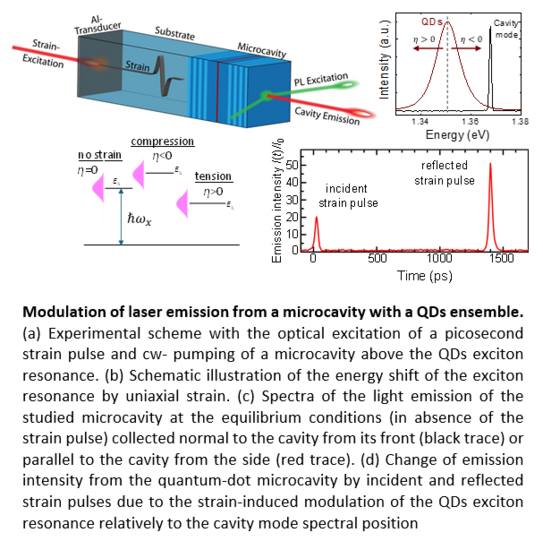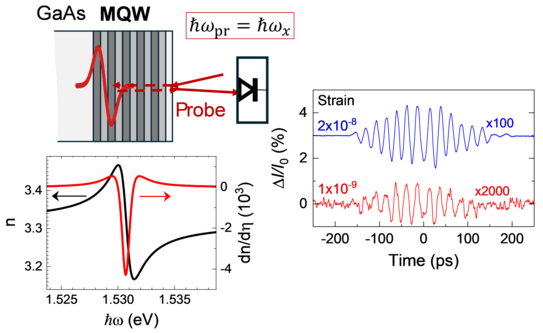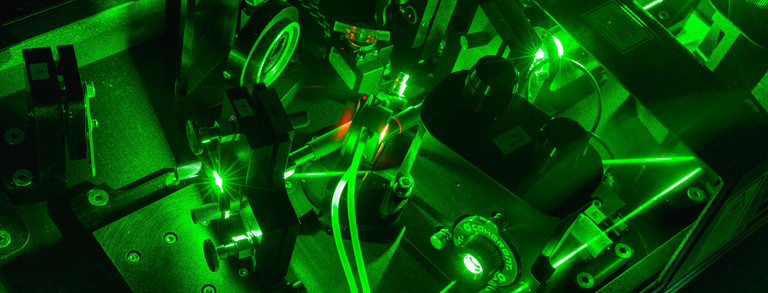Ultrafast optoacoustics in semiconductor nanostructures
In semiconductors, we focus on the coherent optoacoustics effects. We exploit the deformation potential mechanism, i.e., the strain-induced change of the bandgap. Accordingly, the dynamical strain carried by the propagating acoustic wavepacket or by localized monochromatic acoustic wave shifts the spectral position of the exciton resonance. It affects the optical properties of the studied structure and modulates dynamic processes such as light reflection, emission, or absorption.
The effects we have demonstrated are:
- Modulation of exciton and polariton resonances in a quantum well [1,2] and a microcavity [3]. We have achieved a non-adiabatic regime when the modulation rate exceeds the decoherence time of the resonance. This leads to the chirping of the corresponding optical transitions and the formation of optical frequency combs.
- Ultrafast acoustic modulation, both pulsed and quasi-monochromatic, of laser emission from microcavities with active media [4-6].
- Switching of a polariton condensate in a microcavity pumped to the bistable regime [7].

Polaritonic detection of acoustic pulses with ultimate sensitivity

In the case of an extended polaritonic medium, such as a superlattice or multi-quantum wells structure, the strain-induced energy shift of the exciton resonance strongly affects the permittivity in the corresponding spectral range. This results in an enhanced photoelastic effect, thereby improving the sensitivity of acoustic pulse detection. We have demonstrated that by measuring the transient reflectivity from such a structure, we can detect the propagating acoustic pulse, which carries the strain of only 10-9 corresponding to the lattice displacement of 10-16 m (100 attometer). There is no alternative technique providing such sensitivity to the coherent lattice dynamics.



